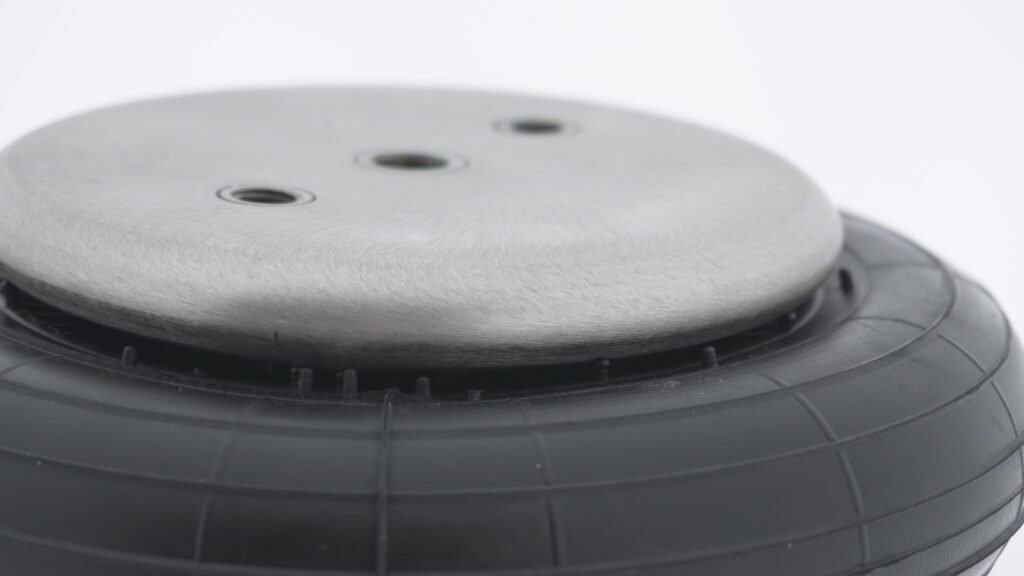
Enhancing Precision with Advanced Air Bellow Technology
Precision engineering demands high-performance vibration isolation, accurate load control, and long-lasting durability. In this domain, air bellows provide a highly effective solution, improving efficiency in numerous industrial applications. These components offer superior shock absorption, low natural frequency, and excellent force distribution, ensuring optimized machine stability and enhanced longevity. The combination of reinforced elastomer materials and stainless steel components results in exceptional reliability under high-load conditions. Their ability to function at operating pressures up to 12 bar makes them ideal for precision machinery. Furthermore, their low-profile design ensures easy integration into various engineering setups.
Superior Vibration Isolation for Optimal Performance
One of the most significant advantages of air bellows is their ability to absorb and dampen vibrations. In precision engineering, excessive vibration can lead to component wear, reduced accuracy, and higher maintenance costs. By incorporating rubber-reinforced bellows, industries can achieve up to 99% vibration isolation, significantly reducing structural noise and extending machinery lifespan. The low-frequency response of air bellows makes them ideal for applications requiring high-precision movement, such as CNC machinery, laboratory equipment, and semiconductor manufacturing. Their flexibility in installation allows for horizontal and vertical mounting, ensuring maximum adaptability. In addition, air bellows provide minimal friction, resulting in smooth and controlled movement during operation.
Technical specifications:
- Natural Frequency Range: 1.2 – 3.5 Hz
- Maximum Load Capacity: Up to 450 kN per unit
- Stroke Length: Varies by model, typically 50 – 375 mm
- Maximum Operating Pressure: 8 – 12 bar (depending on construction)
- Temperature Resistance: -40°C to +115°C (based on elastomer selection)
Increased Durability and Load Adaptability
Air bellows are designed with high-quality elastomers, reinforced with steel bead rings for maximum durability. The availability of single, double, and triple convoluted designs ensures that different force capacities and stroke lengths can be accommodated. The corrosion-resistant coatings and stainless steel options further enhance resilience against harsh environmental conditions, making air bellows suitable for applications in chemical processing, offshore engineering, and heavy-duty manufacturing. These materials allow for chemical resistance and superior aging properties, ensuring long-term reliability in extreme environments. The reinforced multi-ply construction enhances burst strength, allowing operation under high-pressure cycles without deformation.
Material options:
- Standard: NR/SBR for general industrial use
- High-Temperature: Chlorobutyl (CIIR) and EPDM for extreme environments
- Oil-Resistant: Nitrile (NBR) for automotive and hydraulic applications
- Weather-Resistant: Chloroprene (CR) for outdoor environments
- High-Strength Construction: Four-ply design for applications requiring increased load capacity
Compact Design for Space Efficiency
In many engineering applications, space constraints play a crucial role in component selection. Unlike hydraulic cylinders or coil springs, air bellows provide a lower installation height, allowing engineers to optimize machine layout without compromising performance. This feature is particularly beneficial in automated assembly lines, robotic arms, and aerospace technology, where compact and lightweight solutions are essential. With installation heights starting as low as 50 mm, they can be integrated into tight spaces while still offering superior force distribution. Their self-aligning movement enables smooth operation, reducing unwanted stress on adjacent components.
Consistent Force Distribution for Precision Machinery
A key benefit of air bellows is their ability to apply force uniformly across a surface. This prevents uneven stress distribution, reducing the likelihood of component failure. Compared to traditional pneumatic or hydraulic cylinders, air bellows maintain consistent pressure control, making them a preferred choice in pressing, clamping, and material handling applications. Their ability to function in both vertical and horizontal orientations further expands their usability. Their multi-directional flexibility allows for precise force modulation, making them ideal for delicate engineering tasks. The absence of sliding seals prevents friction-related wear, ensuring longer service life.
Cost-Efficient and Maintenance-Free Operation
The absence of mechanical moving parts ensures that air bellows experience minimal wear and tear, making them a maintenance-free alternative to conventional actuators and isolators. This translates to lower operational costs, as there are no lubrication requirements, and fewer component replacements are needed. Industries that rely on continuous operation, such as printing, packaging, and pharmaceutical production, benefit significantly from this cost-effective and durable solution. The sealed construction prevents contaminants from affecting performance, making air bellows ideal for dusty and debris-filled environments.
Environmental and Sustainability Advantages
As industries shift towards sustainable engineering practices, air bellows offer a more environmentally friendly alternative to hydraulic systems, which rely on oil-based fluids. The absence of leaking hydraulic fluids eliminates contamination risks, making air bellows ideal for food processing, pharmaceutical manufacturing, and cleanroom environments. Their energy-efficient operation reduces overall power consumption, aligning with green manufacturing initiatives. Furthermore, their recyclable elastomer components contribute to waste reduction, supporting sustainable industry standards.
Air bellows have transformed precision engineering by providing superior vibration isolation, extended durability, and cost-efficient performance. Their ability to maintain consistent pressure, absorb lateral misalignment, and operate in compact spaces makes them an invaluable engineering solution. As industries continue to demand higher precision, reduced maintenance costs, and sustainable solutions, air bellows remain a crucial component in achieving next-level engineering efficiency. Their versatility across multiple industries ensures their continued adoption in modern industrial applications.
